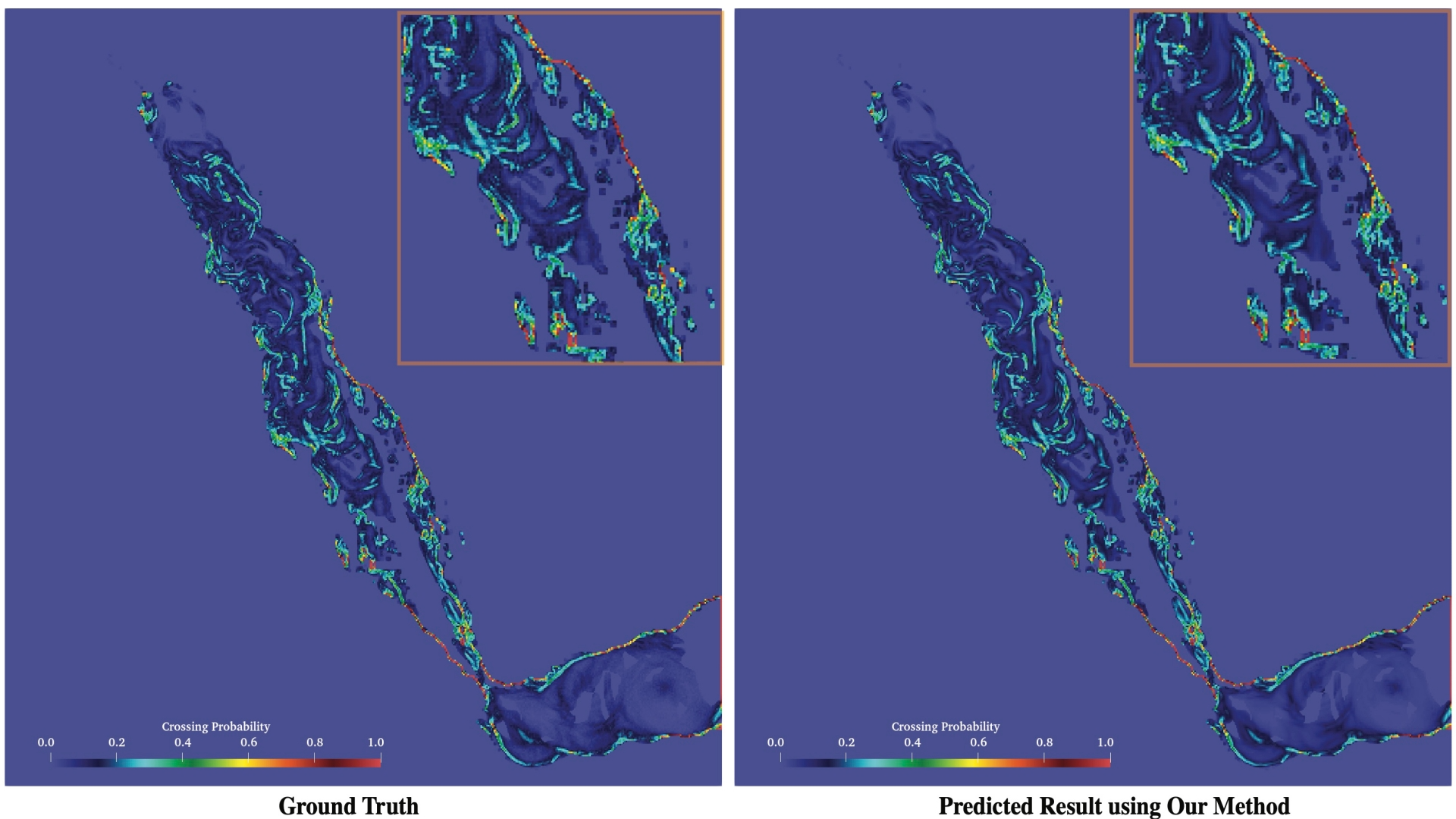Accelerated Probabilistic Marching Cubes by Deep Learning for Time-Varying Scalar Ensembles
Mengjiao Han, Tushar M. Athawale, David Pugmire, Chris R. Johnson
View presentation:2022-10-20T19:54:00ZGMT-0600Change your timezone on the schedule page
2022-10-20T19:54:00Z

Prerecorded Talk
The live footage of the talk, including the Q&A, can be viewed on the session page, Scientific Visualization, Ensembles, and Accessibility.
Fast forward
Keywords
Human-centered computing—Visualization—Visualization application domains—Scientific visualization; Computing methodologies—Machine learning—Machine learning approaches—Neural networks
Abstract
Visualizing the uncertainty of ensemble simulations is challenging due to the large size and multivariate and temporal features of ensemble data sets. One popular approach to studying the uncertainty of ensembles is analyzing the positional uncertainty of the level sets. Probabilistic marching cubes is a technique that performs Monte Carlo sampling of multivariate Gaussian noise distributions for positional uncertainty visualization of level sets. However, the technique suffers from high computational time, making interactive visualization and analysis impossible to achieve. This paper introduces a deep-learning-based approach to learning the level-set uncertainty for two-dimensional ensemble data with a multivariate Gaussian noise assumption. We train the model using the first few time steps from time-varying ensemble data in our workflow. We demonstrate that our trained model accurately infers uncertainty in level sets for new time steps and is up to 170X faster than that of the original probabilistic model with serial computation and 10X faster than that of the original parallel computation.